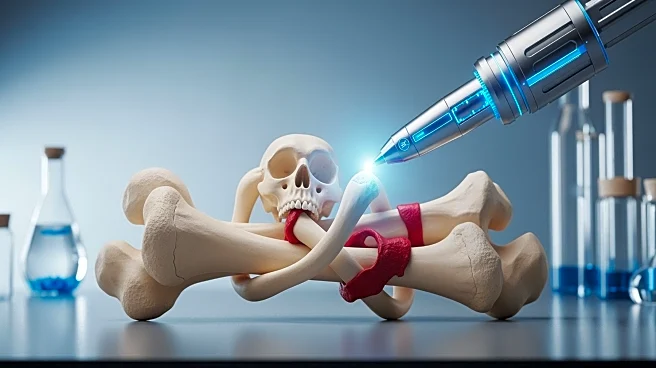What's Happening?
Scientists at the University of Glasgow have developed a bioengineered bone marrow model to evaluate the potential use of a combined CRISPR-CAR T cell therapy for treating acute myeloid leukemia (AML).
This model incorporates human cells within a synthetic peptide hydrogel, providing insights into potential therapies without relying on animal models. The research highlights the translational gap in cell therapy development, where conventional testing methods often fail to predict human responses, leading to high failure rates in clinical trials. The bioengineered model allows for early assessment of therapy effectiveness and detection of off-target effects, potentially reducing costs and improving patient outcomes.
Why It's Important?
The development of this bioengineered model represents a significant advancement in leukemia research, offering a cruelty-free alternative to animal testing. It addresses the translational gap in cell therapy development, which often results in high clinical trial failure rates. By providing human-relevant insights, the model could lead to more efficient and effective therapies for leukemia patients, reducing reliance on animal models and potentially accelerating the development of new treatments. This approach could pave the way for more accurate pre-clinical testing, improving the safety and efficacy of therapies.
What's Next?
The research team plans to continue using the bioengineered model to further study the efficacy and safety of CRISPR-CAR T cell therapy for AML. This approach may lead to more accurate pre-clinical testing, potentially improving the development of safer and more effective therapies over the next decade. The findings could influence future research on CAR T-cell therapy for AML and other blood cancers, encouraging the adoption of non-animal technologies in drug testing.
Beyond the Headlines
The use of bioengineered models in medical research highlights ethical considerations in reducing animal testing. This approach aligns with growing trends towards cruelty-free research methods, potentially influencing regulatory policies and public perception of drug development processes. The model's success could inspire similar innovations in other areas of medical research, promoting more humane and accurate testing methods.











